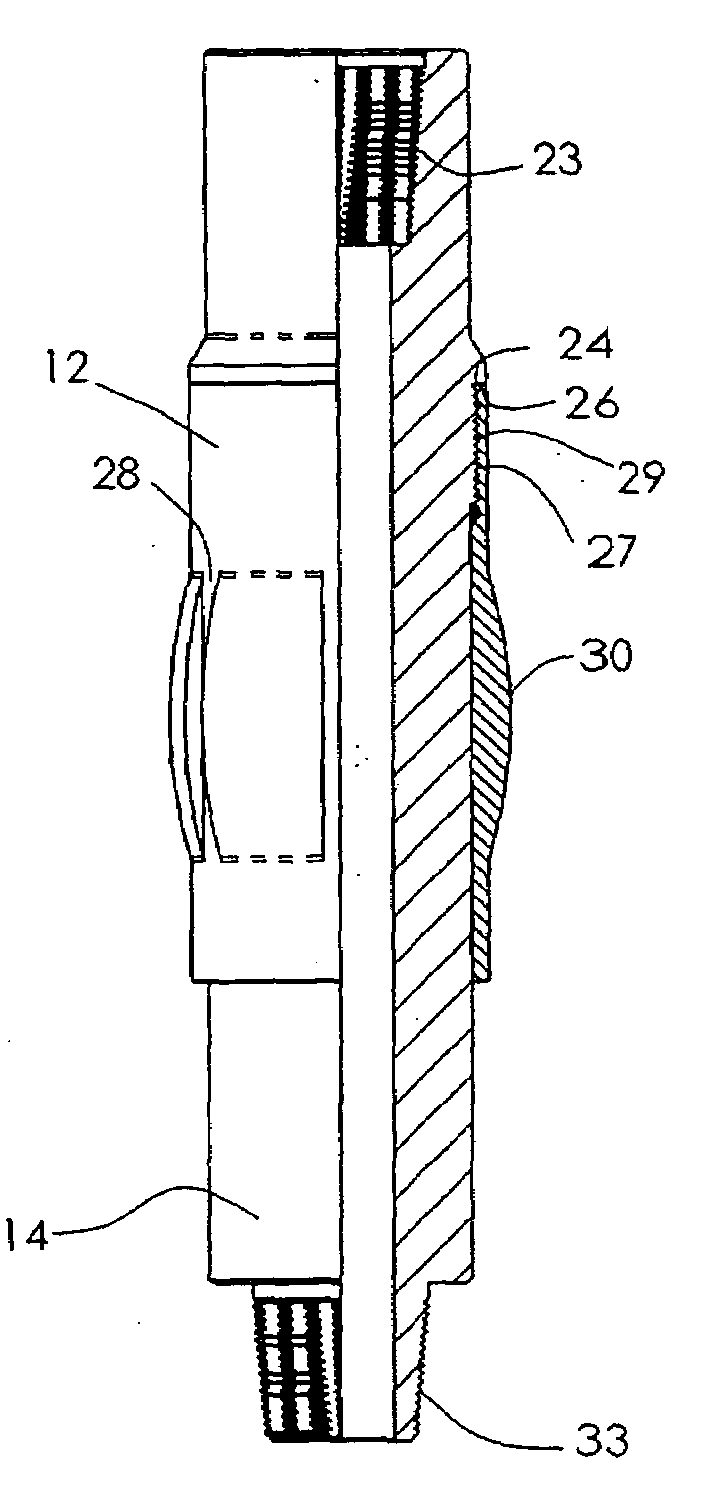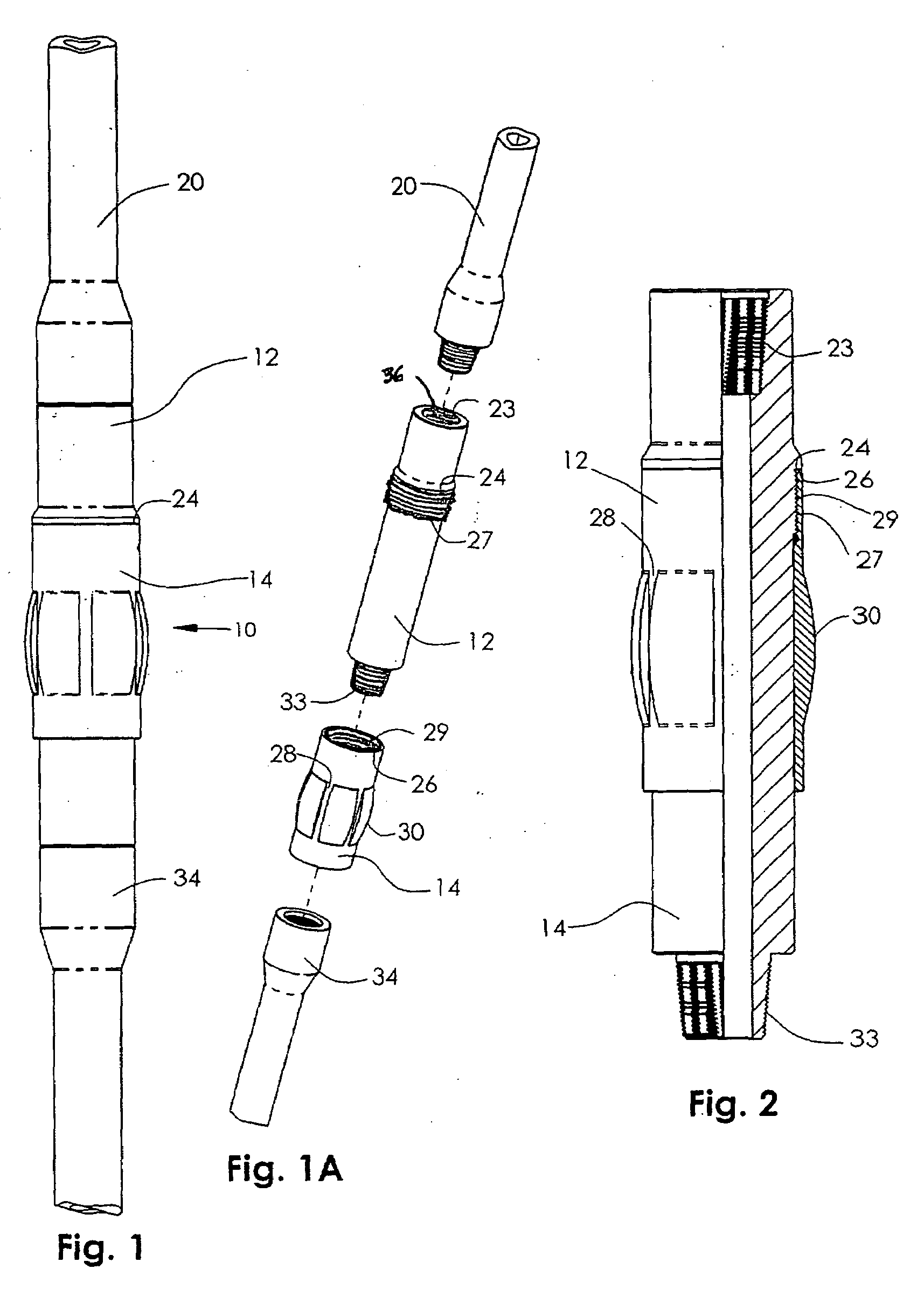Drilling stabilizer
a stabilizer and drilling technology, applied in the direction of drilling rods, drilling pipes, drilling casings, etc., can solve the problems of buckling of drill strings, inability to remove wells, and stuck drill strings, etc., to reduce inventory requirements, improve drilling efficiency, and facilitate attachmen
- Summary
- Abstract
- Description
- Claims
- Application Information
AI Technical Summary
Benefits of technology
Problems solved by technology
Method used
Image
Examples
Embodiment Construction
[0028]Referring to the drawings, FIG. 1 depicts the stabilizer assembly 10 of the present invention installed in a conventional drill string. Stabilizer assembly 10 comprises tubular body member 12 and centralizing member 14. In FIG. 1, stabilizer assembly 10 is incorporated in a conventional drill string between upper drill pipe section 20 and lower drill pipe section 34.
[0029]Still referring to FIG. 1, tubular body member 12 has external shoulder 24 around as the outer surface of said member 12. In the preferred embodiment, said shoulder 24 is situated a sufficient distance from the top of body member 12 to accommodate drill pipe tongs, which are large wrench-like devices used to tighten and loosen threaded drill pipe connections on drilling rigs.
[0030]Referring to FIG. 1A, which depicts an exploded view of FIG. 1, body member 12 has a female “box” threaded connection 23 at its upper end and male “pin” threaded connection 33 at its lower end. Box connection 23 mates with the threa...
PUM
 Login to View More
Login to View More Abstract
Description
Claims
Application Information
 Login to View More
Login to View More - R&D
- Intellectual Property
- Life Sciences
- Materials
- Tech Scout
- Unparalleled Data Quality
- Higher Quality Content
- 60% Fewer Hallucinations
Browse by: Latest US Patents, China's latest patents, Technical Efficacy Thesaurus, Application Domain, Technology Topic, Popular Technical Reports.
© 2025 PatSnap. All rights reserved.Legal|Privacy policy|Modern Slavery Act Transparency Statement|Sitemap|About US| Contact US: help@patsnap.com


